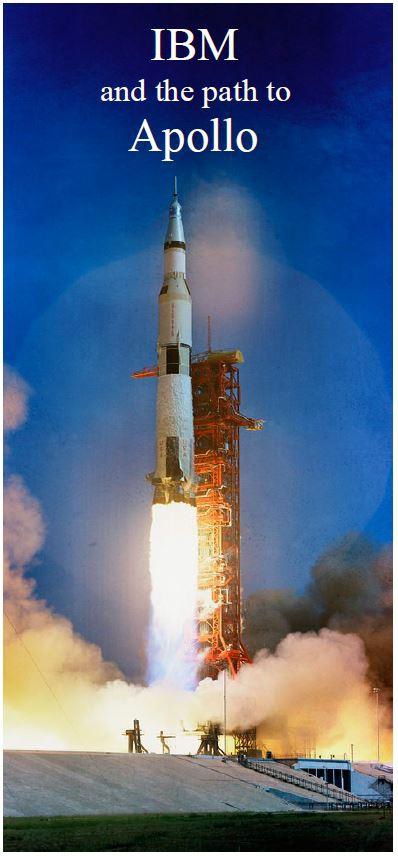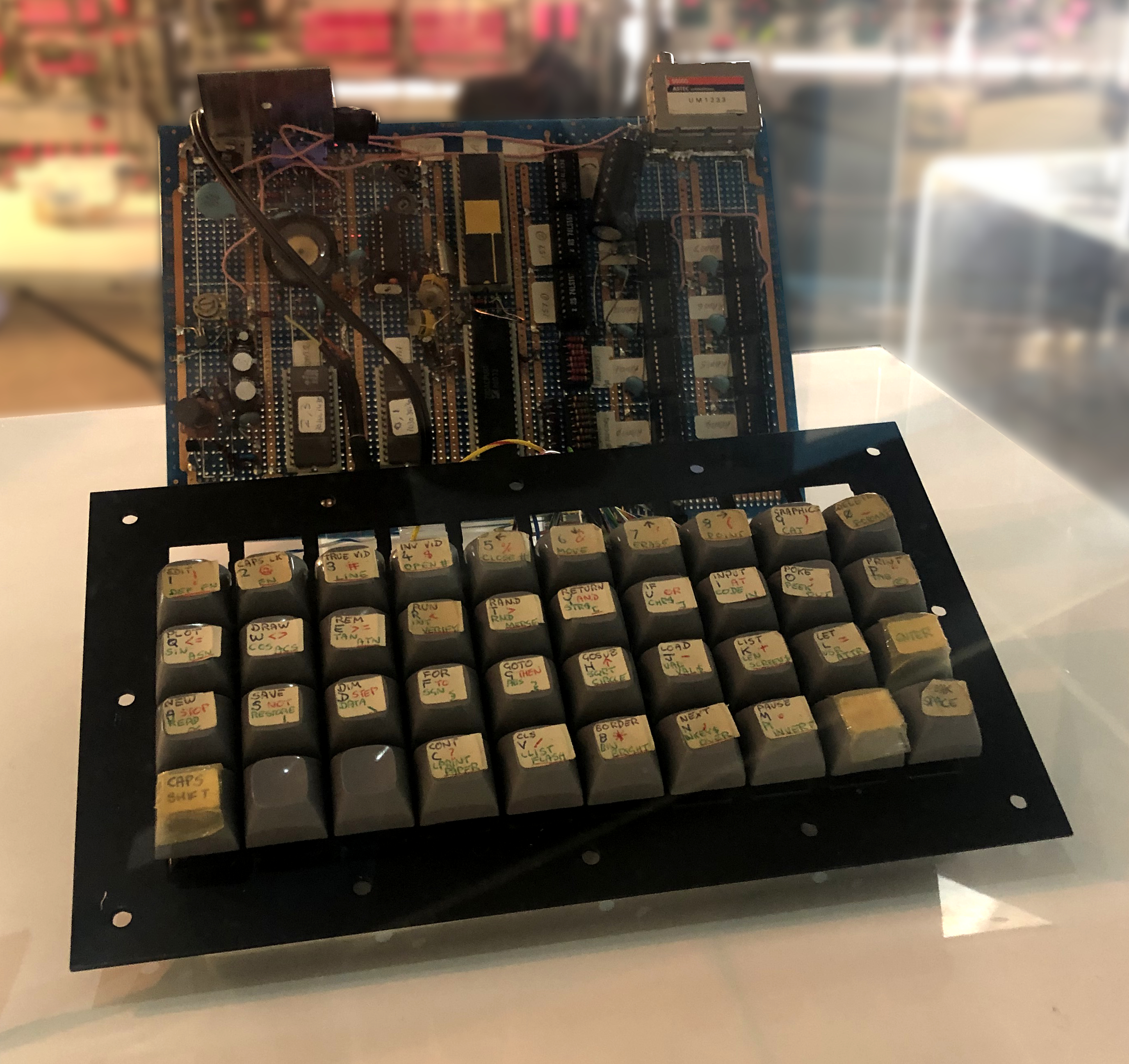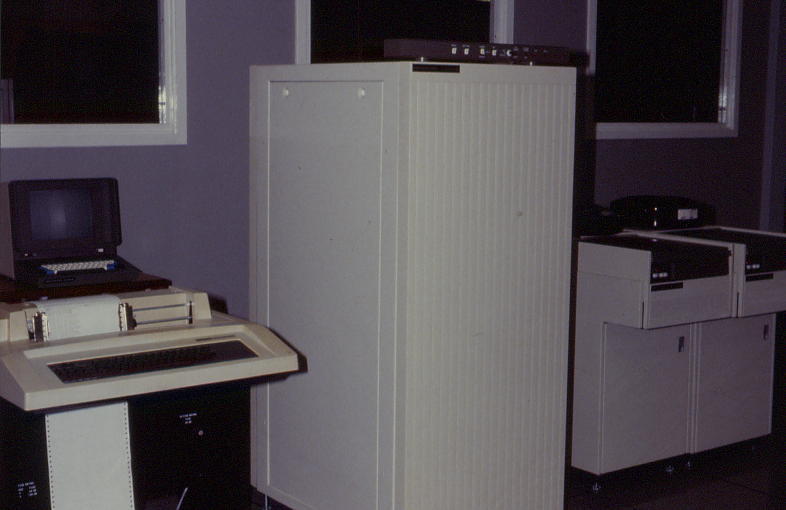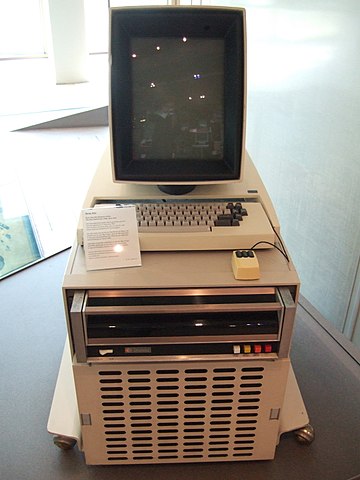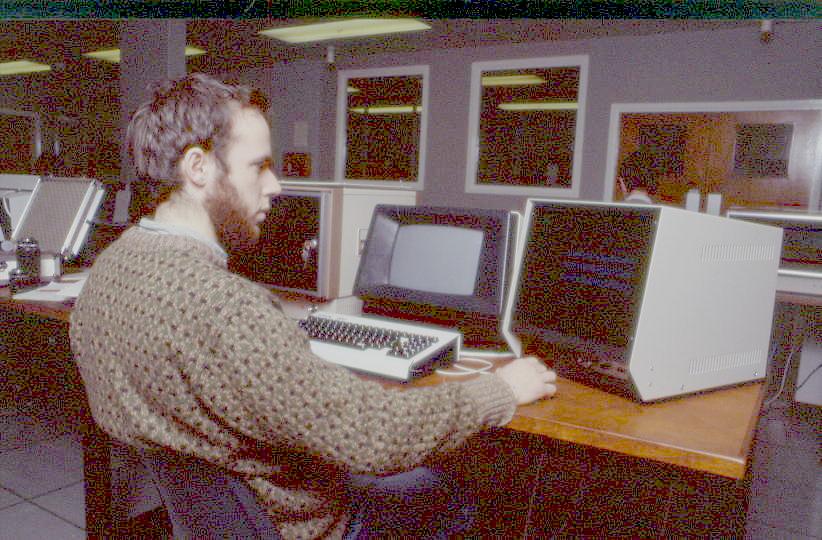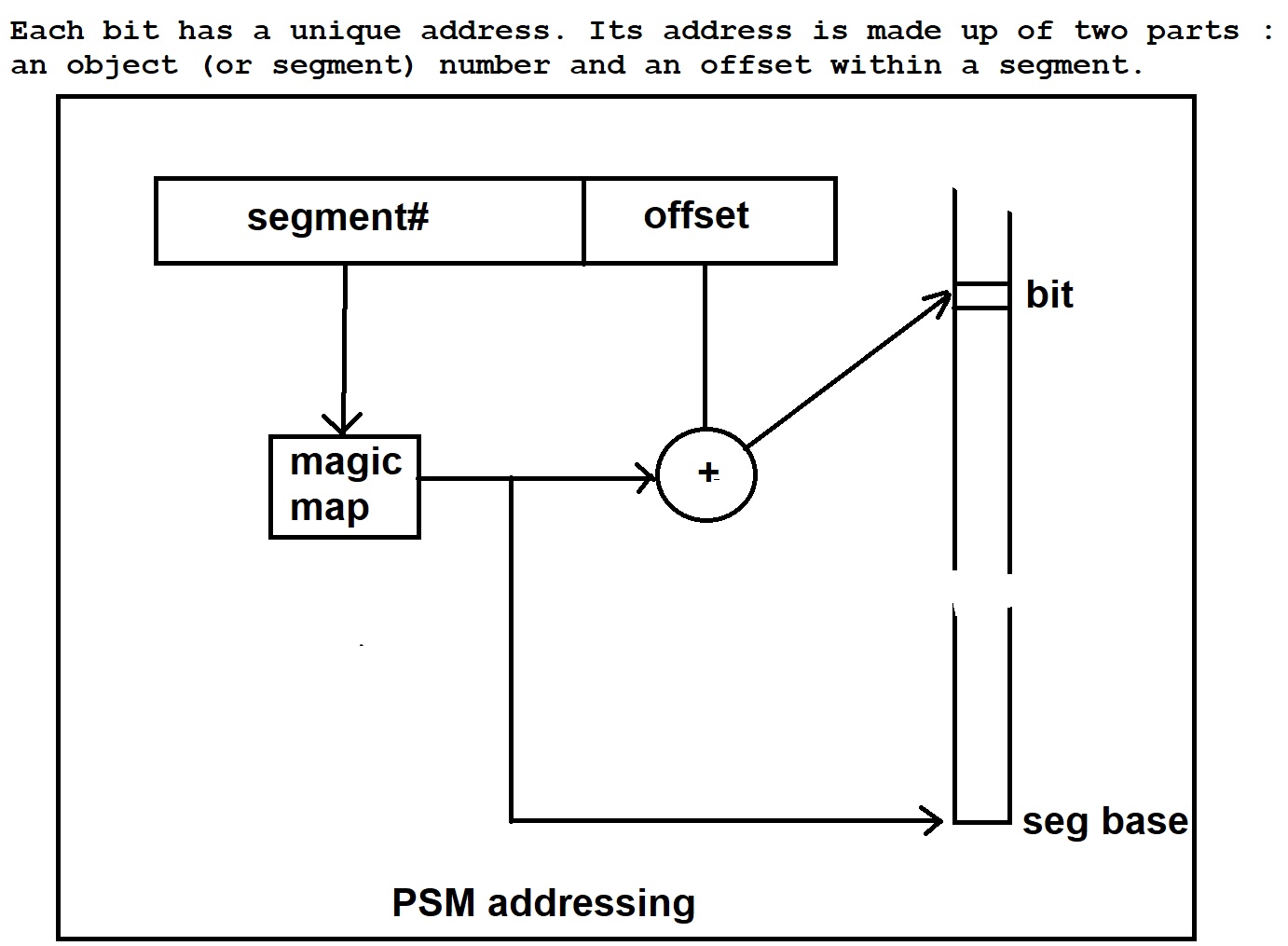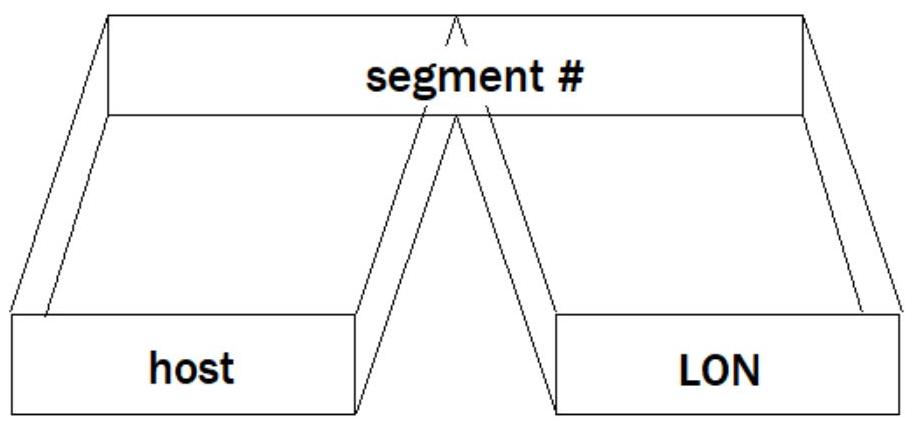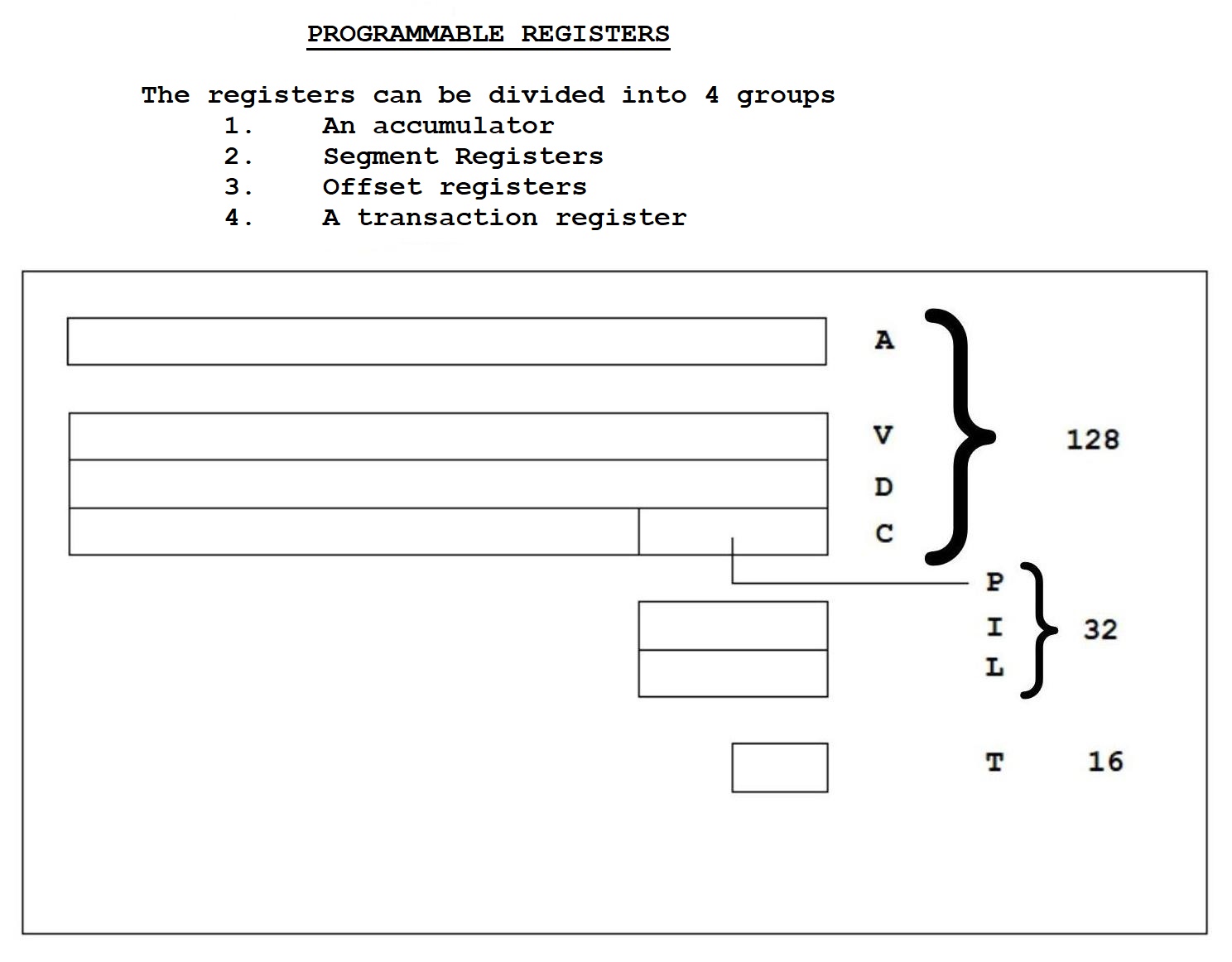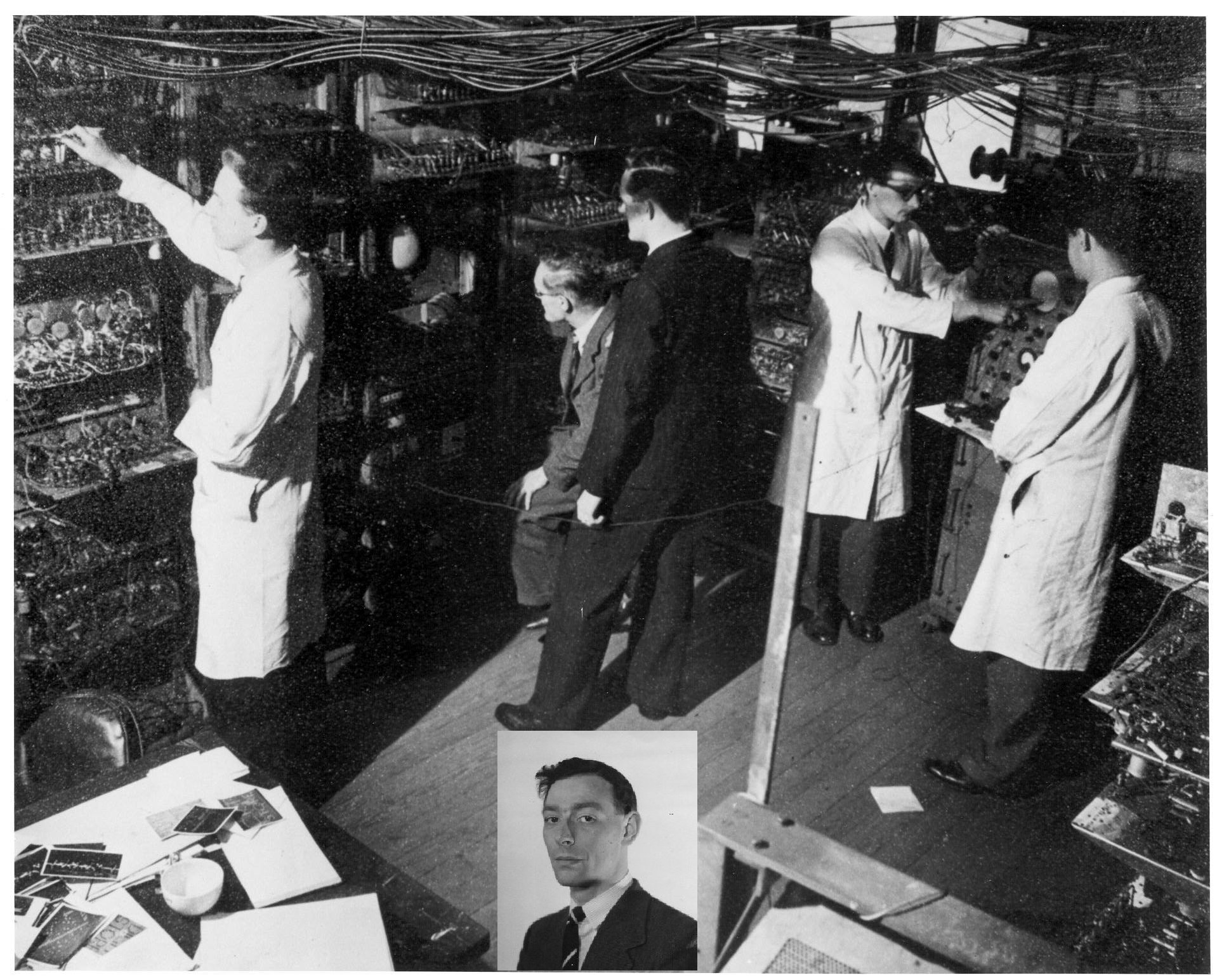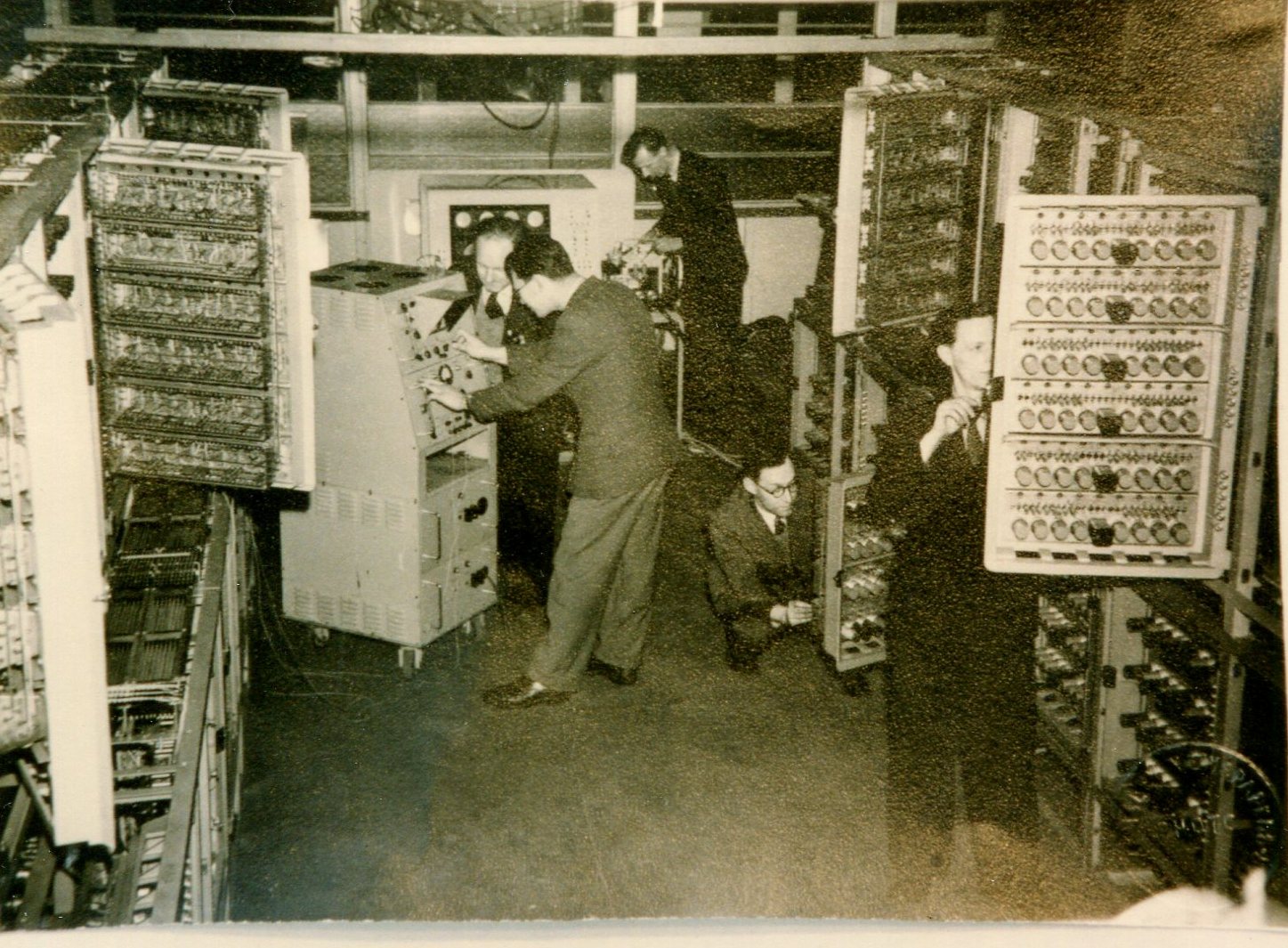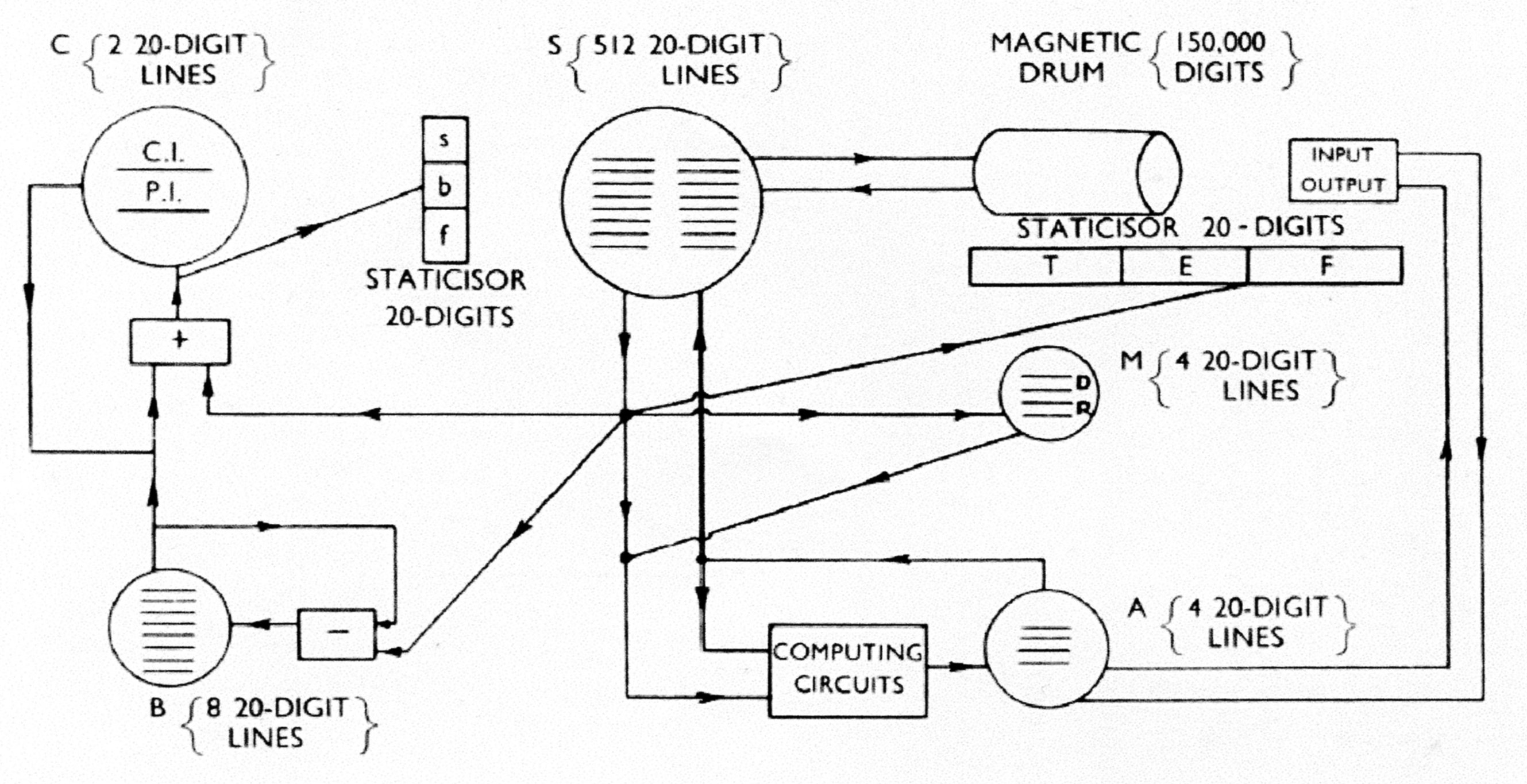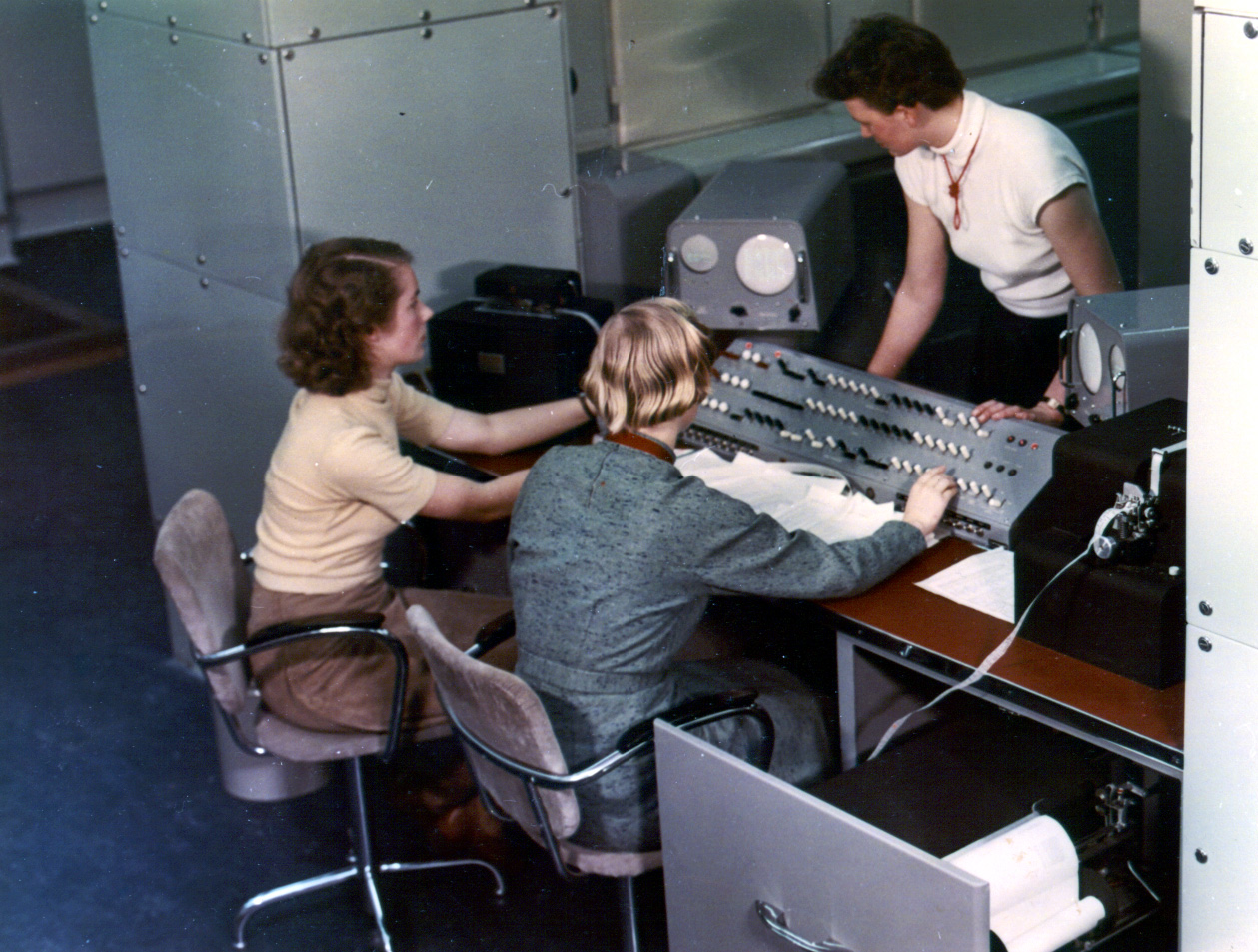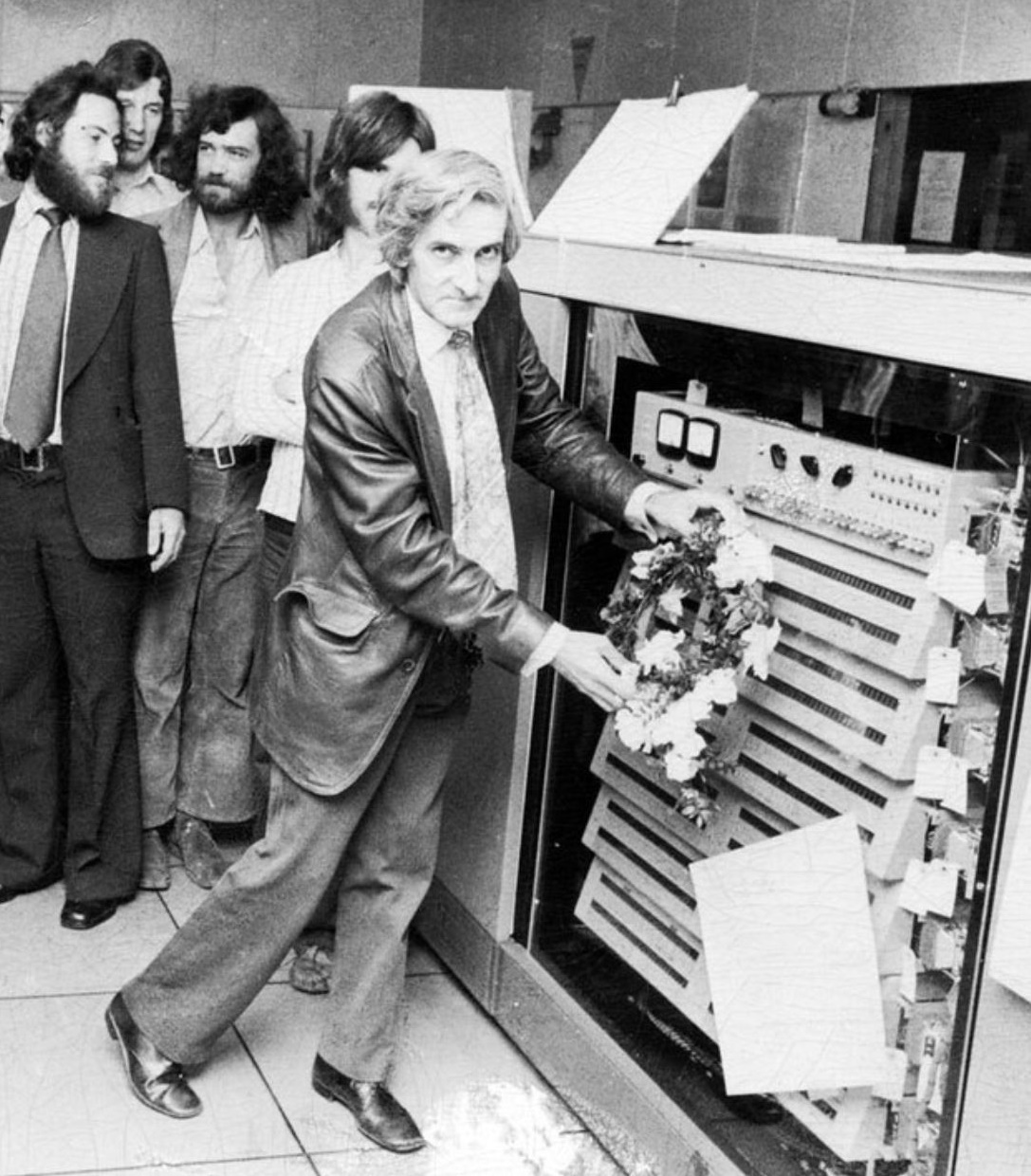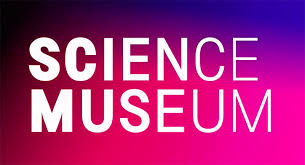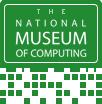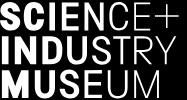| Resurrection Home | Previous issue | Next issue | View Original Cover | PDF Version |
Computer
RESURRECTION
The Journal of the Computer Conservation Society
ISSN 0958-7403
|
Number 88 |
Winter 2019/20 |
Contents
| Society Activity | |
| News Round-up | |
| The Data Curator | Paul Cockshott |
| From Tea Shops to Computer Company: the Improbable Story of LEO | John Aeberhard |
| Book Review: Early Computing in Britain Ferranti Ltd. and Government Funding 1948 – 1958 | Chris Burton |
| The Potrzebie System of Weights and Measures | Dik Leatherdale |
| Obituary: Tony Brooker | Dik Leatherdale |
| 50 Years Ago .... From the Pages of Computer Weekly | Brian Aldous |
| Forthcoming Events | |
| Committee of the Society | |
| Aims and Objectives |
Society Activity
|
ICL2966 — Delwyn Holroyd One of the 7181 terminals blew its internal 2A mains fuse, the culprit being a short circuit mains input filter capacitor. Luckily we had the spares on hand having replaced the same parts in the other 7181 a year or two ago. The ‘improvements’ to the self-learning noughts and crosses program have led to unintended consequences. It has now become so aware of its limitations that it has started to declare the opponent as winner after the first move! The data file has been reset, after taking a copy for analysis. |
|
SSEM — Chris Burton Demonstrations of the replica Baby computer continue regularly. There has been a slight fall-off of visitor numbers over the last few weeks, probably seasonal. On the rare days when only one demonstrator is able to attend, and the machine therefore cannot be switched on, visitors are usually satisfied to see the PC-based simulations together with the one-on-one interaction with the demonstrator. The museum has recruited more volunteers, specifically so that Baby can also be attended on Saturdays when there are more visitors. We are grateful for their commitment as they are trained in the story of Baby and its technology. The computer has been reasonably stable over the last few months. A long-term intermittent problem causing the occasional misbehaviour of running programs seems to have been cured following the discovery of a dry joint on a valve holder on one of the high-up chassis. The machine now no longer stops if we stamp on the floor! A blitz on repairing faults in the power supply system is taking place. There is a suspicion that the half dozen 25 years old Farnell units are feeling weary and need some TLC. For example little Trimpot variable resistors could be prone to loss of good contact and require a refreshing tweak occasionally. A discovery that the documentation for one of the module types inside the power units is incorrect has led us to undertake retrospective creation of the actual circuit diagram. Two of the main buildings at the SIM are now encased in scaffolding. The Power Hall in particular appearing to be swaddled in a steel lattice as it prepares for extensive roof repairs and parts of the site are unreachable. The Revolution Gallery where Baby is housed is unaffected, but visitors have a long walk between some exhibits. |
|
Our Computer Heritage — Simon Lavington The revision of the delivery-list of Ferranti Sirius computers is now complete and a new version has been uploaded to the Our Computer Heritage site. Thanks are due to the late Brian Parker and to Steve Poulton and John Feist (all members of the CCS), and to Barbara Ainsworth of Melbourne, for their invaluable help with tracking down Sirius delivery dates and for providing interesting background notes on many of the sites. |
|
National Museum of Computing — Kevin Murrell We are pleased to announce that we have appointed Dr Mark Priestley a research fellow. His recent work on Colossus and the development of programming has won him a prestigious history prize. Work is underway with our publishers for two new books: one on EDSAC and the rebuild, and the other on the Bombe and its construction. Recent lectures have included Mark Priestley & Gavin Clarke on Colossus, and one on Apollo by Robert Wills. Both were popular and over-booked. Two Electro-Jumble events were held to dispose of non-computing items held by the museum. The events have raised over £1,400. The museum has also taken part in external events, such as BigData London and TechConnect, and they continue to attract a lot of attention. Of course, the hope is that interested parties will make their way to the museum! To mark the 50th anniversary of the Open University, a new display celebrating its early computer technology and courses is open until the end of the year. From January to June 2020 we will open a new display on British Home Computing. |
CCS Website InformationThe Society has its own website, which is located at www.computerconservationsociety.org. It contains news items, details of forthcoming events, and also electronic copies of all past issues of Resurrection, in both HTML and PDF formats, which can be downloaded for printing. At www.computerconservationsociety.org/software/software-index.htm, can be found emulators for historic machines together with associated software and related documents all of which may be downloaded. |
|
Software — David Holdsworth LEO III I have been co-operating with Leo Society members in updating their LEOPEDIA, and it now contains links to our stuff both on sw.ccs.bcs.org and Resurrection. I am looking for information on early assembly language programming, in an attempt to comprehend the state-of-the-art at the time that Intercode was designed. My amazement at Intercode is documented in Blow By Blow. It may be that I was not properly aware of the programming conventions of an era that slightly pre-dates my own entry into the world of computing. KDF9 My request for volunteer proof readers for the Oxford KDF9 Director fell on deaf ears. Here it is again: I have photographed and copy-typed the Oxford University Director, and it can be seen at http://sw.ccs.bcs.org/KDF9/FAX43CD/. It could use some volunteer proof reading. We have resolved the KDF9 Algol library issue from September, and Bill Findlay has succeeded in running the Kidsgrove compiler and resulting compiled programs under the Time-Sharing Director. |
|
Harwell Dekatron/WITCH — Delwyn Holroyd Readers may recall that we ran into problems with some of the high speed trigger tubes last year. Although we have plentiful unused spares, the vast majority either don’t work, or stop working very shortly after being pressed into service. Two possible solutions were considered – a solid state circuit to replace the function of the trigger tubes, or conversion to the much more reliable lower speed trigger tubes used elsewhere in the machine. The former introduces more non-period technology but with no modification needed to existing circuitry, whereas the latter would require more substantial and not easily reversed modifications. The machine has been running for well over a year now with the replacement solid state circuit on a breadboard attached to the rear of the accumulator. This has worked so well that we have now decided to make this the permanent solution. Tony Frazer kindly constructed the circuit on veroboard and fitted it into the rear of the accumulator chassis. The new circuit is just tacked on at various points, so if in the future we find an alternative solution it will be trivial to remove. |
|
Bombe Rebuild — John Harper The replacement of worn parts exercise is now complete. Those involved found it to be a more time consuming than had first been estimated. The extent of the replacement also involved a great deal of stripping down of otherwise good working parts. The replacement of worn and good parts also involved a great deal of re-timing and adjustment. Throughout this exercise we were still able to provide demonstrations due the modular design of the machine; where some of the machine can be isolated and the jobs run on the other parts. The machine is now almost working in full with just a small problem of three relays occasionally not always functioning reliably. |
|
Elliott 803 & 903 — Terry Froggatt The TNMoC Elliott 903 has been running reasonably well since I connected the extra 8K store, so I decided that it was time to tackle the Engineers’ Display Unit. This contains 200 neon lamps which are supposed to indicate the state of the 903’s registers, via three 61-pin connectors. On the TNMoC 903, only one connector is present, and only 60 neons are connected, but these do include the 18 bits of the main accumulator A, and the 18 bits of its extension register Q. Normally the neons are powered by an inverter (inside the display unit) giving ‑40V and +70V, which runs off the ‑6V and +6V supplies in the CPU (probably so that the same display unit can be used, regardless of whether the system is run from domestic 50Hz mains or from 400Hz aircraft supplies or from DC). In the TNMoC display, the inverter has been replaced by a more recent mains-powered supply. Sadly, I have never been able to make sense of the indications given by the TNMoC unit. I’ve always debugged the TNMoC 903 by using the test programs, or by using my own home-made LED accumulator display, or by card-swapping. I’ve always assumed that there was a problem with the replacement power supply, or with the grounding of the 60 signals which are relative to “Computer 0V”. The unused pin on the connector is mains earth cum chassis cum cable screen, but it is not wired to “Computer 0V”, which is only available on the other two 61-pin connectors. In fact, since the 903 was returned to TNMoC in early 2019, the display unit has been happily showing a random output, connected to the mains but not to the 903. With the TNMoC display unit at home, I soon found that the TNMoC display unit was of an older design than either of the other two display units to which I have access, and it did not match the circuit diagrams. The neons are Mullard ZA1004 rather than Hivac 29L, and their limiting resistors are 22KΩ rather than 82KΩ, and as a consequence they run rather hot. The power supply delivers ‑24V and +72V at up to 83mA, but I cannot be sure what voltages the original power supply in this unit would have delivered. There are five boards in the unit, each housing two rows of 20 neons held in clips, whereas in later units they are held in holes through a metal bar which reflects more light. I tested these five boards in my display and found that most neons could be driven on and off from my 903, and I was able to rearrange the five boards so that the 60 signals were all wired to good circuits. With a proper connection to Computer 0V on my 903, I then tested the reassembled TNMoC unit, but I found that only a small number of neons were working correctly. The culprit is the 61-way plug, which is a chassis plug not a line plug, not only lacking a cable clamp, but also lacking the bayonet mechanism need to compress the rubber bung which holds the pins. (Normally there are three chassis plugs on the rear of a display, and three cables with line sockets and line plugs, connecting to the three chassis sockets on the 903. There are no connectors on the rear of the TNMoC display, just a hard-wired 60-core cable, and my guess is that the chassis plug now on the end of this cable was robbed from the rear of the unit). I also found that, with all five boards installed, not all of the essential A and Q bits’ neons displayed correctly, but there was no problem if just the two boards for A and Q were fitted. I suspect that this is due to a limitation of the power supply. These two boards display 56 of the 60 signals, (the A, Q and G registers and the X and Y overflow bits). A third board would be required to display the four I/O status bits, but I’ve decided to only refit the two essential boards, to keep the heat down, when I return the unit to TNMoC. A bizarre side-effect of this work is that I’ve discovered that the display of the X and Y overflow bits is reversed on my display and on the TNMoC display, and probably on all 903 displays; a fact which has gone unnoticed by me and possibly by everybody else, for over 50 years. |
|
ICT/ICL 1900 — Delwyn Holroyd, Brian Spoor, Bill Gallagher ICL 1904S Emulator At the request of the computer museum in Katowice, an enhancement is being made to the emulator such that it can drive their paper tape reader and punch via serial ports, also to allow a real printer (e.g. OKI 321/391) to be connected via a parallel port. A similar combination of emulation and real peripherals can also be seen at TNMoC, where the George 3 Executive Emulator is used to drive a real ICL 7501 terminal when the 2966 is not operating. PF50 (1902A etc.) The PF50 document cache has been scanned and returned to its owner. Results will appear on icl1900.co.uk in due course and a copy will be supplied to TNMoC. ICT 1905 Emulator Recent availability of diagnostics for the peripherals has thrown up a few problems regarding edge cases in data transfers. Some of these will be addressed over the next few months. ICT 1902/1903 Some work has been done to determine the executive order code and the various executive entry points. PF56 Stalled awaiting time to work on the DDE interface to the 1900 and the MCIU to the 7930 scanner. Has anyone got a set of PF56 logics? George 3 Some further enhancements written back in the late 1970s (by Brian) for versions 8.63/8.64 were recovered last year. These have now been included in the final ICL version 8.67 for testing. Most worked without any problems, but one of the larger changes had obviously not been tested – it does work in part but more work will be required to complete it, especially without access to the documentation available at the time it was written. Why implement these now? Why not? Many sites included their own enhancements to G3. Surely this is part of preservation. |
News Round-Up
|
Our esteemed Chairman, David Morriss was due to relinquish his post at the Annual General Meeting of the Society in October. He took on the responsibility, agreeing to serve for a maximum of three years because of his many other commitments. A willing volunteer had been identified as the new Chairman (subject to the agreement of the AGM) – Doron Swade (for it was he). Unfortunately Doron was, in the event, unable to take on the responsibility and David has generously agreed to remain in post for a further year. His gesture is much appreciated and we look forward to another sparking year under his leadership. 101010101
From the Centre for Computing History in Cambridge we hear that it has been presented with the prototype Sinclair ZX Spectrum by John and Kate Grant. John did the development of Sinclair BASIC back in the early 1980s and had the prototype board packed away in his loft ever since. The museum was contacted by Kate Grant who offered to donate many computing items with the “Sinclair prototype board” being fairly low on that list. It has won Object of the Year in the first Museums in Cambridgeshire Awards. It was used during the development of BASIC for the Spectrum. The ZX Spectrum is an iconic machine in the story of the personal computer, and is an important part of Cambridge and British computing history. For many in the UK the Spectrum was their first experience of using a computer and it quickly gained a loyal following when released in April 1982. Its low price tag made the computer accessible and its introduction led to a boom in companies producing software and hardware for the machine. It was also the first experience many people had of writing their own games and software. The ZX Spectrum is often acknowledged as a catalyst in the development of the UK gaming culture and industry. |
The Data CuratorPaul CockshottFrom late 1980 to the summer of ’82 I was working on my PhD. The research topic was how to incorporate the concept of data persistence into high level compiled languages in such a way as to allow it to work in a distributed networked environment.
The dominant paradigm in computing in 1980 divided computer memory into two logically distinct types: Random Access Store (RAM) and Filestore. Data in RAM vanished when you turned the machine off, whereas the Filestore was persistent. The conceptual distinction reflected two different technologies, semiconductor DRAM and rotating magnetic discs. These two technologies are still with us, but persistent semiconductor store (SSD) is rapidly replacing the old rotating disks in new computers. Today, both RAM and SSD are made of silicon, and both allow rapid random access. But the conceptual legacy of the old disc filing systems persists. Files have to be opened and accessed by read and write system calls, and any data stored in the variables of programme vanishes when the programme ends. But this distinction between persistent and volatile memory can in principle be hidden by smart virtual memory technology. The EMAS operating system which we used in Edinburgh in the late ’70s and early ’80s and the MIT Multics system had a different concept. A user’s files were mapped into the address space of their programme and accessed as array data with a programme. Some early interpretive languages like APL and Smalltalk also had the notion of a ‘workspace’ in which the variables of a programme could persist between login sessions. Although memory mapped filestore has since been adopted in Windows NT, Windows 10 etc., much current programming still takes place using the older read/write file paradigm. Memory mapping of files only really works for array data types. Heap data – instances of classes, graphs, trees etc. – is still non-persistent in most programming languages. A limited form of heap persistence is provided by Java serialisation, but this facility is not as consistent and orthogonal as that which was long ago available in Smalltalk.
Persistent Store Machines This implied that we would need a computer architecture with a very much larger shared virtual address space than those available on 1980s computers, which maxed out at 32-bit virtual address space. Furthermore, remember this was before the collapse of the USSR and socialism still seemed to be winning on a world scale. It struck me as obvious that a design for socialist planning should in principle be extendible to worldwide planning, for a day in the future when the number of computers rivalled the numbers of people. The population of the world, around 4 billion in those days, would already exhaust 32 bits if there was one computer per person. The first machine architecture I designed, PSM, had a 128-bit address space made up of a 48-bit host number, a 48-bit local object number and an offset of up to 32 bits within the object. That is to say, individual objects could be up to 4 Gigabytes in size.
Objects would migrate via a worldwide network from the source machine to any machine that had a copy of the Host/LON combination. This is very similar to the somewhat later concept of a URL used in the WWW, but with the difference that the identifiers were seen as being binary rather than textual. The machine architecture seems, by modern standards, to have a rather sparse register set (shown below).
The sparse set of registers was heavily influenced by the ICL Series 39. We were in close collaboration with ICL with the view to the PSM being a successor architecture to the Series 39. The single 128-bit accumulator was already there on the Series 39. The segment registers we proposed were longer than those on the Series 39. The intention was to prototype the PSM by microcode changes to an existing Series 39. ICL supplied us with an early Series 39 machine at Glasgow University to which the team had moved. But obstacles were placed in the way of accessing the microcode so the research platform at Glasgow was switched to a new machine. Concluding Thoughts For the target set of econometric calculations to be feasible certain engineering problems had to be solved. It had to become possible to access what is now termed ‘Big Data’. It had to be possible to unify information across millions of computers. It had to be possible to have databases very much larger than could be addressed by the 32-bit computers available at the start of the 1980s. Today the technologies to do most of these things are well-established thanks to the Web and cloud data servers. It is arguable, however, that the computing paradigm on which all of this is built, that of volatile RAM combined with a distributed filespace is less amenable to high-performance computation over distributed graph structures than the sort of address architecture our team was working on in Glasgow in the mid-1980s. With modern VLSI technology, it would be feasible to design a class of 128-bit object addressed RISC processors. The ICL register architecture we proposed is clearly obsolete and would have to be replaced by something more modern. Paul Cockshott is a computer scientist and Marxist political economist. In computing, he has worked on parallelism, 3D imaging, the limits of computability, video encoding, electronic voting and various special purposes computer designs. In political economy, he works on value theory, socialist planning theory and the econophysics models of production and money. His most recent books are Computation and its Limits, and Classical Econophysics. He is now an honorary research fellow at the University of Glasgow, having retired from teaching. Email: william.cockshott@glasgow.ac.uk. |
From Tea Shops to Computer Company: the Improbable Story of LEOJohn AeberhardIn the years before the Second World War, J.Lyons & Co, a family-run catering firm known for its tea shops and corner houses and the “nippies”, the smartly dressed waitresses who served in them, had built a reputation as a go-ahead organisation in office management and procedures. Notwithstanding an Edwardian public face, with, behind the scenes, clerks as late as the 1920s standing, like Bob Cratchit, to work at large mahogany desks, the company was early into the new world of Organisation and Methods. It had, for example, developed a system whereby customer orders were photographed for record purposes and then returned to the customers as invoices in an early attack on the mountain of paperwork that had threatened to engulf its various businesses. Each of these many businesses – tea, teashops, ice cream, bakeries, kitchens and the like – had its own groups of clerks and managers, but all working to the same management processes that moved information from operations – manufacturing, selling, distribution and so on – to decision-making senior management. The vast mass of transaction data from these operations was summarised and compared with pre-set standards, forecasts and budgets, providing management with a detailed picture of the week’s trading on the Monday of the week following. It was as close to a real time management information and decision support system as you could get in the days before computers. What really distinguished Lyons, however, was its culture of utter self-reliance. It built its own factory equipment, including the ovens for its well-known Swiss rolls; it built its own trucks; it grew its own tea and so on. Coming from this background, the company somehow sensed that it needed something like a computer to make further progress. So when, after the war, news began filtering in about the development of “electronic brains” used in solving complicated mathematical calculations of the kind required to direct artillery and missile trajectories, there were those in the Lyons company, like J.R.M. Simmons, a top-flight mathematics graduate from Cambridge who had set up the Lyons’ O&M department or Systems Research Office, who could sit up and take notice. As a result, in May/June 1947 O.W. Standingford and T.R. Thompson, assistant comptroller and chief assistant comptroller, crossed the Atlantic on an expedition to research what was going on in the States and in the course of it to find out whether computers, which had so far been used exclusively for mathematical calculations, “were capable of being put to use in commercial offices”. The report they produced for the Lyons’ board reported on visits to universities, including Pennsylvania, the home of the ENIAC computer, and companies, including the ENIAC designer’s – J.P. Eckert’s – newly formed Electronic Control Company which he had set up to build computers for sale when the Moore School at the University had rejected the idea. Visits to NCR and Burroughs proved fruitless and the report of a visit to IBM was interesting in view of later developments: “as far as we were able to see, the aim of this company is to use electronic calculation purely as an adjunct to punched cards”. However, they received encouragement from Dr H.H. Goldstine of Princeton, who had promoted the original research resulting in ENIAC, and Professor Howard Aiken of Harvard where they saw the electro-mechanical Harvard Mark I, II and III computers, the first two in operation and the third in construction. A particular stimulus was provided by a visit to Prudential Insurance where they were told of a project to build an electronic machine to carry out the premium billing of millions of policyholders and automatically write insurance contracts. Herman Goldstine encouraged them to make contact with Cambridge University in England where EDSAC was in development and the Thompson/Standingford report also includes a visit to the Mathematical Laboratory at Cambridge where they met with Professor Douglas Hartree and Dr Maurice Wilkes. We “found them both keenly interested in our proposals for a commercial machine and prepared to make their knowledge and advice available,” the report records. The report identified sales invoicing, letter-writing and payroll as potential applications for a commercial computer and concluded with the assumption that Lyons “will want to take full advantage of these machines for their own offices.” They also saw wider horizons for business computers: these machines could “well be a prime factor in relieving the present economic distress of the country.” Finally, the report put various options to the Lyons board: fund and work to influence the Cambridge project; put their ideas in the hands of a large electrical concern, such as EMI or GEC; work with Eckert’s company, Electronic Controls; approach the UK Government; or “build a machine in our own workshops.” “It is possible for us to play a passive role by merely keeping in touch with developments and in due course buying machines as they become available, probably from American sources. But such a role would not enable us to have any influence on the kind of machine built and without commercial influence they may well be built in a form more suited to handling mathematical and census calculations...”. Build it ourselves This proved to be the crucial consideration. Years later, in an interview with the Science Museum, J.R.M. Simmons declared there was a feeling that “unless the user (i.e. Lyons) was prepared to take a hand in building the (business) machine, the machine would never get built.” The view that Simmons and Lyons took at the time was that the mathematical computers in development would not be of the “slightest use to us because we were dealing with a mass of information, not a complication of calculation.” The Lyons board took the “build it ourselves” decision, but based on the Cambridge EDSAC design and with one proviso: that before this decision was implemented the Cambridge team would have to prove that EDSAC was capable of doing a mathematical job. One Thursday in May, 1949, the call came through from Cambridge that EDSAC had compiled a table of prime numbers and, as it happened, the Lyons’ board was in session. A message was passed into the boardroom from Simmons advising the board of this and asking for a go-ahead, and, he recalled, the answer came back five or ten minutes later: yes! Simmons called the decision “extraordinary” and “courageous:” others, he suggested, would have said “foolhardy”. But, he went on to say, “we had this big office organisation, which by definition was a gross extravagance on the back of the company, and the only way in which economies could be made on the scale we thought could be made was if we did go ahead and build the computer.” In the two years that had elapsed since the Thompson/Standingford visit to the US, a great deal of thought had been going on behind the scenes at Lyons and Dr John Pinkerton had been appointed as electronic engineer. Pinkerton, a Cambridge graduate recommended by Wilkes, was destined to take over and lead the technical development of LEO, the Lyons Electronic Office, drawing on the EDSAC experience. Things, thereafter, moved quickly. David Caminer, who headed up the Lyons Systems Research Office, was put in charge of all the systems and programming development. In effect, starting from scratch, he had to invent the software disciplines of commercial systems and programming. Extraordinary team Between them, Pinkerton and Caminer assembled an altogether extraordinary group of talented individuals, all drawn to Lyons by the singular challenge presented by the LEO project. Young people were given their head and did not disappoint. Someone who was not involved, but might have been had she stayed, was a young chemistry graduate, Margaret Roberts, later Mrs Thatcher, who worked for a time in the Lyons Laboratories after coming down from Oxford. Among the ones who were offered computer jobs, but got away, was Jeremy Isaacs who went on to prominence within national television in the UK and, later, at the Royal Opera House. Among those who grasped the opportunity and joined the LEO project along the way at the start of what were to be brilliant careers were Peter Hermon, best known for his work with British Airways where, having devised and implemented the airline’s reservations system, he became a full board member; Mike Gifford whose career embraced many years as a prominent chief executive of the Rank Organisation; Tim Holley, who, as chief executive of Camelot, created the National Lottery; John Aris, who after running IT at the Imperial Group, became a distinguished director of the National Computing Centre; and many others who, though less in the public eye, ran ground-breaking computing projects, or who, like Frank Land, LEO’s chief consultant up until the merger with English Electric, pursued a distinguished academic career, becoming a professor at, first, the LSE and then the London Business School. Then there was Mike Jackson, who computerised Freeman’s mail order, turning a large business with 4,500 people around completely within a space of five years; George Hayter, who developed the first market-wide online systems for the London Stock Exchange; and Alan Jacobs, who was with Hermon at BA and then went on to become head of computing for Sainsbury’s. Others, like Ninian Eadie, who was the LEO consultant through all the earl y Post Office computerisation projects, stayed throughout the various mergers that characterised the British computer industry and made it to the ICL board. Then there were those who pushed the boundaries of LEO computing out into the wider world, creating subsidiaries in South Africa, Australia and Eastern Europe: respectively, Leo Fantl, Peter Gyngell and Ralph Land, the brother of Frank, who achieved some spectacular sales successes in countries such as Czechoslovakia, Poland and Russia and subsequently joined Rolls-Royce plc, becoming a member of its international board as director responsible for East and Central Europe. Yet others took their LEO experience with them to high-profile careers in IT in other countries, including John Gosden, who headed computing for Equitable Life in New York, and Paul Dixon, who became head of worldwide computing for Massey Ferguson in Toronto. Both Gosden and Dixon were prominent and widely known figures within the industry association, the Association for Computing Machinery (ACM), in North America. Peter Hermon, reminiscing in the book LEO: the incredible story of the world’s first business computer, spoke for the sentiment expressed by all of them at one time or another. “We were all doers and part of a concentration of talent that can rarely have been equalled in any programming office anywhere.” Hermon also singled out the LEO training programme for particular praise: “As a model of clarity and professionalism, I have seen nothing since to rival it.” All-round consultants What distinguished these early LEO consultants was their ability to take on all aspects of the job in hand. Unlike in other companies, there were no specialist salesmen who passed the buck to a systems operation that developed the application. At LEO, it was all one and at no time were LEO consultants on any bonus system linked to sales. Nor was there any industry specialisation. And bearing in mind that they were inventing on a daily basis, across different applications and different commercial and industrial environments, the pressures placed upon them were also extraordinary. Hermon, again, recounts how he wrote the functional specification for one of two statistics programs for Imperial Tobacco on the evening his eldest son, David, was born “in between rushing upstairs to assist the midwife with cups of tea.” Late night sessions in the office were routine and were rewarded by a perk remarked on by many a LEO consultant, namely the prized concession of late night meals in the executive dining suite which was barred to them during normal working hours. LEO I – like a battleship The LEO story is, above all, a people story. But the machine had to be built and, in itself, this was an epic event. Work on physically building the machine, LEO I, an electronic stored program system able to accommodate 2048 instructions in a mercury delay line acoustic store, went ahead briskly after the Lyons’ board decision and followed closely the logic of EDSAC. Changes that were needed to meet the requirements of office work focused on the input/output mechanisms and, after a false start with magnetic tape experiments in conjunction with STC, a combination of punched cards and paper tape for input and line printer and card punch for output resulted. The end result was a machine that, as Leo Fantl, an early LEO pioneer, remarked on first seeing it, resembled a battleship, occupying some 5000 sq.ft. of space and employing some 6000 thermionic valves in 21 tall racks. It was completed through the course of 1951 and the time came to run the first job. Bakeries job a world first The one chosen was a valuation of the bread, cakes and pies produced in a dozen Lyons’ bakeries for their assembly and despatch to retail and wholesale channels. It integrated three different tasks that hitherto had been carried out separately: it valued output from each bakery at standard material, labour and indirect costs, as well as total factory costs; it valued issues to the different channels at standard factory cost, distribution cost, sales price and profit margin; and calculated and valued despatch stock balances for each item. The job first ran on 17th November, 1951, and from 29th November ran weekly making LEO the first computer system in the world to run a live office application to a regular, time sensitive schedule. It has been noted that, up to this time, no more than 20 people, including clerical assistants, had been involved in carrying out the whole LEO task in computer design, construction, application design and programming. The bakeries job was followed, on 12 February, 1954, by a second world first when LEO’s first large-scale job, the Lyons’ payroll, produced pay cheques direct from the computer for 1670 staff of the bakeries without ever having to use the back-up system. LEO II and the decision to enter the computer business Over the years, a family of LEO computers evolved from this first machine. A design for LEO II was produced by Dr Pinkerton in May 1954 as soon as the payroll job was up and running successfully. The new design speeded up the computer by reducing the mercury delay line storage tubes to a quarter of their original size and featuring faster registers in the arithmetic unit and increased word size. It also made provision for the connection of magnetic tape and magnetic drums anticipating the time when reliable equipment became available. Within a week of the design being submitted, the Lyons’ board had given approval to go ahead for two such systems. More than this, the board meeting on 30 June, 1954, produced the momentous declaration, “We should let it be known that we are prepared to build other Mark IIs for sale or hire.” To give effect to this, the board also decided to form a company, LEO Computers Limited. There were no exaggerated expectations, not even an estimate of likely sales. But it was significant as a declaration of intent. By the time LEO II was fully operational, in May 1957, LEO Computers had received its first orders for machines. WD & HO Wills was the first to sign up for a system to handle invoicing and distribution of products. Stewarts & Lloyds, a family steel firm, followed suit with a system for payroll. The Ford Motor Company’s parts depot at Aveley came in with an order that was viewed as particularly significant in that capital expenditure for the project had to have approval from Detroit. At this stage, however – partly because of the formidable bulk of the LEO machines – most companies interested in applying computers to their business problems took what became known as the bureau route. In other words, they paid for time on the Lyons machines on a service basis. Ever Ready, Kodak and Tate & Lyle were early LEO bureau users and, in most cases, the killer application was payroll. Other, less routine, bureau applications included the preparation of the Government’s tax tables following budget announcements and the calculation of all station-to-station distances for the British Railways network. It’s hard to imagine now, but at this time LEO was out on its own in the application of electronic computers to commercial data processing. The population of electronic computers of any kind in the UK was still small and, following a visit to the US in March/April 1958 to check on progress there, Pinkerton and Caminer, whilst impressed at the enormous investment and vitality of the US scene with all sections of the community taking at least the first steps into electronic computing, reached the conclusion that there were not the results to justify the extent of the investment. LEO III and transistors They did, however, return with the conviction that LEO should push ahead as fast as possible with the design of an all-semiconductor LEO III, one of the very first transistor machines. LEO III, featuring microprogramming and multiprogramming and a high-level language, CLEO, was completed in 1961, fully three years ahead of the IBM 360 series. Meanwhile LEO II installations and the workload of the LEO service bureau, which had moved into a new location above Whiteley’s department store in Bayswater, had added to LEO Computers’ reputation and brought in a string of well-known names across a wide spectrum of business: Standard Motors at Coventry; Durlachers in the City of London; Dunlop in Birmingham; a London boroughs consortium based on Greenwich. In addition, late in 1959, LEO had installed its first system for the UK Government to handle a massive payroll job for the Ministry of Pensions in Newcastle. This had followed bureau work on PAYE tables for the Inland Revenue in the mid-1950s. Government reticent with support The UK Government, however, was noticeably reticent in supporting, either directly or with orders, the LEO thrust into commercial computing, albeit R&D funds were routinely ploughed into scientific and engineering projects. LEO suffered the disadvantage of being outside the accepted group of suppliers of electronic equipment for defence systems and scientific use such as Ferranti, Elliott and EMI. As Murray Laver, a LEO user who became prominent in the industry both as head of the computer division of the UK’s Ministry of Technology and chief of the Post Office’s National Data Processing Service and its National Giro operation, put it, “In Britain generally we were slow to realise that the computer market for commercial work would greatly exceed the markets for science and engineering.” The UK Government, he added, was “especially sceptical that a machine produced by a catering company could meet their needs.” At the time when, all through the 1950s, LEO was making its own frugal way, R&D contracts worth over $400m were awarded to IBM by the US Armed Services, or some 60 per cent of IBM’s total R&D expenditure. Similar contracts, if not quite on the same scale, went to other US companies producing considerable fall-out for commercial system development. In comparison, the UK’s National Research Development Corporation had only some $15m to cover the whole of British industry. Of all the early generation LEO installations, only one was marked down as a failure. This was a production control job for British Oxygen at Edmonton and here there was a major organisational change within the client company that destroyed the structural basis for the job. LEO III was not announced with great fanfare. Instead, it was introduced quietly to companies who had expressed interest in acquiring systems. It received a warm reception. Orders came in rapidly and ten systems were marked down for delivery at the end of 1962 and through 1963 – almost as many systems as had been installed in the lifetime of LEO II. An order from Dunlop for a comprehensive system to cover all aspects of sales and distribution, won after a protracted battle with IBM, was seen as especially indicative of LEO III’s superiority in the market at the time. Against this background of increasing potential and market opportunity, which included the first steps to set up operations overseas, LEO Computers came face to face with a major organisational change that was to have a profound effect on the development of its product line and the overall direction of its business. Merger with English Electric – a bombshell Out of the blue, in February 1963, a merger with the computer business of English Electric to form English Electric LEO Computers was announced. David Caminer recalls, “the dismay and disbelief” of LEO staff at all levels. The interlinked families who controlled Lyons had always kept control of business strategy, as against operational management, close to its chest and there had been no discussion with the LEO directors prior to the agreement. In the event, most of the top jobs went to English Electric people and, according to Caminer, it soon became apparent that there was a conflict between the cultures of the two merging groups. In English Electric, computers were equipment and were sold by salesmen. Within LEO, by contrast, computers were part of a mission to bring efficiency to the office and the LEO consultant retained responsibility for the application well after the ink was dry on the contract. The merger, paradoxically, was followed by years in which the sale and installation of LEO computers took off, particularly following the introduction of a faster version of the LEO III, the LEO 326 able to run individual programs at five times the speed and run more programs concurrently. The 360 challenge and denouement But around the corner, another challenge of supreme significance was lurking with the announcement, in April 1964, of IBM’s System 360 range. Just four months before, in December 1963, Honeywell had sprung its 200 Series. The Americans were coming in force for a new assault on the business computer market. The announcement of the IBM 360 coincided precisely with the installation of the first LEO III installations for the British Post Office in London and Lytham St Annes. Nor did the announcement stop the Post Office from ordering five LEO 326s, the largest order ever placed with any computer vendor up to that time in the UK. Despite the avalanche of orders from central and local Government and many of the leading names in British business, such as Allied Suppliers and Shell Mex & BP, time was running out for LEO computers. They were to soldier on manfully for many years with the last of the line – the Post Office LEO 326s – remaining in service until 1981. The line had numbered 73 machines in total – LEO I, eleven LEO IIs and 61 LEO IIIs – and had given 30 years service. The Lyons’ interest in English Electric Leo Computers had ended in October 1964 with the English Electric purchase of the remaining 50 per cent Lyons’ holding, at the same time merging Marconi’s computer interest into the group to form English Electric Leo Marconi Computers. English Electric paid Lyons £1,856,250, which, according to the press statement announcing the deal, “approximately covered Lyons total expenditure in the Leo computer project.” And then in March 1967, Elliott Automation was also merged into the group when the company became plain English Electric Computers Ltd., only to be followed by yet another merger, announced in July 1968, with International Computers and Tabulators (ICT) to form International Computers Limited (ICL). This time the biter was bit and it was ICT, not English Electric, that was in the driving seat. English Electric’s System 4 computer range, which had been announced in September 1965 as the follow-on range for LEO and other systems within the group, had slipped its early delivery dates by some six months and the sales of ICT’s 1900 range had done well. Much of the LEO experience, including multiprogramming, had gone into the design of System 4, albeit the definition of the range had been based on the RCA Spectra 70 hardware to save on both development time and cost. The key feature of System 4, as with the Spectra 70 range, was its compatibility with the IBM 360. The ICT 1900, by contrast, ploughed its own furrow, a different philosophy to the one that English Electric had espoused. This leads to an intriguing question that can never be answered: what might have happened to the British computer industry had the line through LEO and System 4 prevailed? As it was, the influence of LEO and LEO people declined through the succession of mergers, though nothing can take away their place as frontrunners in the history of business computing. “It was a pity,” Murray Laver has said commenting on the first of the mergers, “that LEO’s distinctive contribution to the development of computing in Britain was diminished when LEO Computers was absorbed into a larger conglomerate.” Like the J. Lyons company, swallowed by Allied Breweries in 1978, LEO is now a memory, but one to savour and conjure. [Georgina Ferry’s excellent book A Computer Called LEO covers much of the same ground in much greater depth for anybody interested. A more general history of Lyons, Legacy: One Family, a Cup of Tea and the Company that Took on the World has also been published recently. Ed.] John Aeberhard built the high tech PR consultancy A Plus Group following a career in in-house corporate PR with English Electric Leo Marconi (EELM), ICL and Honeywell Information Systems in the UK and the US. Sold his company to Omnicom in 1996 and promptly retired! Contact at john@aeberhard.co.uk. |
Book Review: Early Computing in Britain Ferranti Ltd. and Government Funding 1948 – 1958
Chris Burton
I saw an early draft copy of two of the appendices of Simon Lavington’s new volume, so eagerly awaited the publication of the full work. I was not disappointed. The book is the comprehensive account of those technically and commercially innovative years when Ferranti and Manchester University ventured from demonstrating what a computer is to setting up a business to sell the machines to far-sighted customers in the UK and abroad. The role of government in nurturing and facilitating this early enterprise is recognised in the book’s subtitle. I think that this is the first time that all the various strands have been brought together in one place.
The author has arranged the book in three parts. There is first an introductory history of the transition from the demonstration of the Small-Scale Experimental Machine (the “Baby”) to the full-scale engineered version delivered to the University of Manchester in 1951, with a second to the University of Toronto in 1952. Both of these were Ferranti Mark I computers and a fascinating detailed account is given of their development and delivery to the users. The factory and design office were in the Moston works in North Manchester, and a cohort of programmers, many of whom were women mathematicians, had to be built up and housed in the “Tin Hut” on the factory site. Using the experience of those first two machines the Ferranti Computer Department improved the hardware reliability and the functionality of the system to produce a second version, the Mark I* (pronounced “mark one star”).
The second and predominant part of the book explores how the seven Mark I*s were manufactured, sold and delivered from 1953 onwards. I found this to be the most interesting part of the story. Each of the seven gets its own chapter recounting the profile of the customer, the Ferranti and customer personalities involved, the troubles and successes of each and what happened at the end of life of the installation. This is where the UK government became active, first as the Ministry of Supply and later as NRDC, in facilitating sales to three government departments and smoothing the way to selling to the non-government customers, two of which were in the Netherlands and in Italy. The support was vital, because there was no history of a market for these expensive machines to justify large development expenditure.
These “case study” chapters are well illustrated with pictures of the installations and some of the staff involved. The atmosphere in these early computer installations comes over well, with initial tentative steps being made by the programmers and their internal customers leading to results being produced so gratifyingly quickly compared with earlier processes. Of course, it was all very hands-on at the control desk – often the user, programmer and operator roles were one and the same person. Some of the installations had interesting side stories, such as the significant design changes made to the Rome machine, and the various special-purpose as well as general purpose machines used at GCHQ in succession to their Mk I*. In the third part of the book, the final chapters form a further reference work in themselves. During the last twenty years there has been occasional questioning of the true origins of the design of the Baby, promoting the possible role of Alan Turing and others. In my opinion the author presents a very fair case for that background history. Other chapters provide quite detailed accounts of the software of the Mark I and I* machines, and of the hardware details of both. Another chapter provides biographical information of as many of the relevant participants in the Ferranti and the University teams as could be identified, an appropriate tribute to many otherwise unknown names. A final chapter provides comparison tables of computer deliveries and of performance data. Throughout the book there are copious footnotes and references, in many cases to hard-to-find reminiscences and memoirs of the pioneers. I was slightly irritated by the publisher’s footnote policy where in some places a complete multilane footnote is boiler-plated as the next footnote on the same page. Again, in chapter 3 a complex six-line footnote about Turing’s correspondence is repeated seven times. I feel sure there are simple conventions to cope with such voluminous repetition. There are a few editorial errors such as objects’ or persons’ names spelled differently in different places, and one picture caption with the wrong naming of the subjects. But most are easily resolvable by the reader. This is a very readable, authoritative reference book, the definitive record of the history of the earliest Ferranti computers. It is published in the Springer History of Computing series as was the author’s previous Elliott computers’ history “Moving Targets”. Note that the current book is titled “Early Computing in Britain”. It would be nice if the trilogy could be completed with a comparable history of the early English Electric computers. Meanwhile, I thoroughly recommend that it should be on our bookshelves or better still, beside our armchairs. |
The Potrzebie System of Weights and Measures
Dik Leatherdale|
Readers may have some dim memory of Mad Magazine. People to whom I have spoken recall copies being passed around at school, as indeed do I. My grasp of the detail is poor, but I do remember The Potrzebie System of Weights and Measures. What that? you might ask. It was a satire on the metric system. One potrzebie is a measure of length being the thickness of edition 26 of Mad Magazine “as measured in the physics lab of Milwaukee Lutheran High School” in 1956. A dekapotrzebie would be == 10 potrzebies and a kiloptorzebie == 1000 potrzebies and so on. On we go... A ngong is defined as a cubic dekapotrzebie with the obvious derivations. But not just length and volume. As in the metric system, mass and volume are related by reference to a specific substance. A blintz is defined to be the mass of one ngong of halavah. Again, you might ask, what on earth is halavah? Happily, there is a footnote to help us – “Halavah is a form of pie which has a specific gravity of 3.1416 and a specific heat of .31416”. And it is this footnote which has stuck in my memory for more than half a century. And on, and on. The time taken for the earth to rotate is the definition of a clarke and here we depart from the usual set of prefixes and adopt a bewildering set of names for decimal fractions and multipliers of a clarke. But, I hear you object, the metric system doesn’t extend to time. No, but once it did. In 1793 the French revolutionary government introduced metric time, with 10 hours in a day, 100 minutes in an hour and 100 seconds in a minute. It didn’t catch on. Perhaps because of sundials. There are sections of the system for force, energy, power, radioactivity, temperature, angles and so on. The entire Potrzebie System is internally consistent. The Wisconsin Academy of Arts, Sciences and Letters awarded the article first prize as “most original presentation”. Once more, you might ask “why is he telling me all this?”. Well, it turns out that the system was devised by a teenage high school student. His name? Ah yes, I was coming to that – Donald Knuth – you may have heard of him. If not, do look him up. Mad Magazine ceased publication in 2019 after 67 years. |
Obituary: Tony Brooker
Dik Leatherdale
It is with much sadness that we have heard of the passing of one of the great early pioneers of computer science and of software in particular, Prof. R.A. (always “Tony”) Brooker at the age of 94. We published a profile of Tony Brooker in Resurrection 45 but two of his achievements stand out – His conception of the Compiler Compiler, a program to streamline compiler development. It analysed a user program against a set of language syntax descriptions (functionally similar to BNF), then invoked corresponding high-level language functions to generate object code for the host computer. Mark I Autocode – the world’s first “high level” programming language to be made available. This latter was a master work, not only for its imagination but also for its implementation in the unbelievably tiny store available on the Ferranti Mark I computer. Both of these programs were aimed at easing the task facing other programmers. Whereas Turing was perfectly content to program at the binary level with 5-hole paper tape and expected everybody to do likewise, Brooker sought to help others create useful software within a reasonable amount of effort. And this was the mark of the man. This writer and many others can personally attest to his never-failing willingness to do everything possible to give help where needed. We have lost a towering contributor to our art and a very nice man. |
50 Years ago .... From the Pages of Computer WeeklyBrian AldousFirst 1900 in US: Following hard on ICL’s announcement of its intention to infiltrate the North American computer market comes the news of its first American sale. An ICL 1902A has been ordered by Barclays Bank DCO to replace an IBM punched card installation in their New York offices. (4/12/69) Scheduling system to keep check on engine repairs: Two years ago BEA’s Management Advisory Services and Production Engineering decided that the airline’s overhaul system needed to be speeded up. As a result a computer based production scheduling system which ensures that engine repairs are done in the correct order has been introduced at the Heathrow engineering base. The new system, which uses Feedback data collection equipment worth £16,000, is thought to be the first of its kind to be used by a European airline. Daily work schedules and progress lists are produced on BEA’s ICL 1903. (4/12/69 p12) MARCH series for process control: Rationalisation of GEC-Elliott Automation has led to the evolution of a single, unified range of process control computers, replacing the heterogeneous assortment bequeathed by last year’s merger. Known as the MARCH series, the new range has been formed by combining Elliott’s ARCH series with machines from English Electric’s M range, and includes five processors, ranging in price from £4,000 to over £30,000. In ascending order of size they are: the M2112, the Elliott 105, 9000 and 9050, and the M2140. (11/12/69 p1) GEC-EA win orders in East Europe: The commissioning of an on-line process control system, claimed to be the largest in Europe, and two further orders for computer control systems, mark the end of a particularly successful 12-month period for GEC-Elliott Automation, during which business with Eastern Europe has been trebled with orders amounting to nearly £9 million. The on-line process control system, which has been installed at the Schedt refinery in East Germany, 60 miles northeast of Berlin, at present comprises three ARCH systems used to optimise the production of a variety of products including ammonia, nitric acid and fertilisers. (18-25/12/69 p1) Plessey buys Ferranti’s N/C Interests: Following the acquisition of Airmec in October, Plessey has now bought out Ferranti’s numerical control interests. These moves should produce the rationalisation of the machine tools industry which has been advocated by the Industrial Reorganisation Corporation and Mintech. A new company, Plessey Numerical Controls Ltd, is being set up as part of the Plessey Electronics group. (18-25/12/69 p20) Met Office picks IBM’s new giant: The announcement that the Meteorological Office is to install an IBM 360/195, worth between £3.5 and £4 million, at its headquarters at Bracknell, Berks ends months of speculation as to which computer manufacturer would pull off this important order. The long story of the Met Office order can be traced back at least as far as April 1968, when the Treasury gave approval in principal for the expenditure of “several million pounds” on a replacement for COMET, the Met Office KDF9 system at Bracknell. At that time it was expected that the main beneficiary of the Treasury’s generosity would be ICL whose new large computer, Project 51, was expected to be ready by this year. (8/1/70 p1) Hatfield’s PDP-10 to be made available to local schools: A major project which will allow substantial computer access to schools in Hertfordshire will come into operation in September when Hatfield Polytechnic completes its installation of a DEC PDP-10 multi-access computer valued at nearly £300,000. The polytechnic has previously experimented with computer education in schools linking schools to one of its two Elliott 803B machines. This facility was limited to six schools and allowed each school only about one hour per day of central processor time. The new computer will have a 64K 36-bit word core store with a fixed disc of 500,000 words capacity, two exchangeable disc units of 5.2 million words each, four DEC tape units and paper tape and punched card peripherals. A PDP-8/I will be used as communications processor. (8/1/70 p12) Mini-machines market boosted: Two new machines, each a response to different aspects of the increasing demand for mini-computers, have been launched in the UK. From Ferranti’s Automated Systems Division comes the Argus 600 which is claimed, at about £1,700, to be the cheapest digital computer available in this country. And from DEC there is the PDP-11, at £3,900 and above, incorporating features normally only available on larger machines. The demand anticipated by Ferranti for the Argus 600, which has been tested by users for some while, has led it to plan for large-scale production and it is “ready to meet demands reaching a level of many hundreds or possibly thousands a year.” (15/1/70 p1) Compilation of Telephone Directories gets radical changes: The logistics of the telephone directory service are staggering. Telephone directories alone cost an annual £4 million to compile, produce and distribute; the Directory Inquiries service costs £7 million. There are 22 million copies of directories issued every year, using 25,000 tons of paper. A complete set of directories covering the whole country contains 30,000 pages and 7,500,000 entries. By 1975 all these figures will have increased by half as much again. Until recently the compiling of telephone directories was a manual operation, and the printing was by conventional hot press methods. With the necessity of updating each directory every 15 months, it became clear to the Post Office that radical changes in the compilation and printing methods would have to be introduced if the service was to keep up with the expansion of the telephone service. In association with the National Data Processing Service and Her Majesty’s Stationery Office (which prints the directories) the Post Office therefore devised a system, using computerised typesetting control which they claim is the most advanced of its kind in Europe, and possibly anywhere. (22/1/70 p12) Major motorway order goes to GEC-Elliott: More than 800 miles of motorway in England and Wales, some still under construction, will be equipped with a computer-based traffic control system for which GEC-Elliott Traffic Automation will supply computer hardware and software in two contracts with the Ministry of Transport worth £481,000 and extending up to 1974. Five in-stations will each have two MARCH 9050 computers operating in tandem. The contracts also cover the communications equipment to link them to 12 control offices, and the video terminals, telephone switching panels and mimic diagrams, as well as standard software and special programs which will be written as part of the future increased automation of the system. (22/1/70 p32) Data transmission by Optical Link: An optical data transmission system that will provide full duplex point-to-point communication for high speed terminals at locations where cable installation would be too expensive or impractical, and where other methods would not be suitable, has been introduced by the Computer Transmission Corp of Los Angeles. The system is known as Optran and is based on infra-red techniques. The Model 1815, announced as the first in a family of similar units, can be used in almost any situation where two optical units can be placed in line-of-sight contact, free from the possibility of accidental obstruction. (29/1/70 p12) CEGB Power Station to have ARGUS 500: Three Argus 500 computers are to form the central control hardware for a 1,250-megawatt nuclear power station now being built for the Central Electricity Generating Board at Hartlepool, on the north east coast. Besides the three Argusii, Ferranti’s Automation Systems Division will supply two complete sets of scanning and peripheral equipment, one set for each reactor-turbine-alternator unit. These include analogue scanners, disc stores, digital output relays and two independent CRT systems each with seven displays. The whole contract is understood to be worth about £1m. The power station, whose reactors will be of the gas-cooled type, is being built by British Nuclear Design and Construction Ltd who will write the systems software for the project. The system is designed for one Argus 500 to be on permanent standby. and for automatic self-testing routines to cause it to be switched in in the event of processor failure. (5/2/70 p1) ICL Wins Russian Order for I905E: An export order has been granted to ICL for the delivery of a 1905E computer to Electrosila of Leningrad, makers of probably the largest turbogenerators in the world. The order also includes a Ferranti Argus 500 machine and the system’s primary application will be to test the company’s products. The 1905E will have a 32K core store, two exchangeable disc drives with a capacity of eight million characters each, two sets of four 60 Kc/s magnetic tape units, a 1,350 lpm printer using a Cyrillic character set, a 300 lpm printer, a graph plotter, and punched card and paper tape peripherals. (26/2/70 p1) |
Contact details
Readers wishing to contact the Editor may do so by email to
Members who move house or change email address should go to
Queries about all other CCS matters should be addressed to the Secretary, Rachel Burnett at rb@burnett.uk.net, or by post to 80 Broom Park, Teddington, TW11 9RR. |
Forthcoming EventsLondon Seminar Programme
London meetings take place at the new BCS location – 25 Copthall Avenue Moorgate EC2R 7BP starting at 14:30. The venue is on the corner of Copthall Avenue and London Wall, a three minute walk from Moorgate Station and five from Bank. You are strongly advised to use the BCS event booking service to reserve a place at CCS London seminars. Web links can be found at www.computerconservationsociety.org/lecture.htm . For queries about London meetings please contact Roger Johnson at r.johnson@bcs.org.uk. Manchester Seminar Programme
North West Group meetings take place take place in the Business School of Manchester Metropolitan University Chester Street, Manchester, M1 5GD: 17:00 for 17:30. For queries about Manchester meetings please contact Alan Pickwick at alan_c_pickwick@btinternet.com Details are subject to change. Members wishing to attend any meeting are advised to check the events page on the Society website at www.computerconservationsociety.org/lecture.htm. MuseumsSIM : Demonstrations of the replica Small-Scale Experimental Machine at the Science and Industry Musuem in Manchester are run every Tuesday, Wednesday, Thursday and Sunday between 12:00 and 14:00. Admission is free. See www.scienceandindustrymuseum.org.uk for more details. Bletchley Park : daily. Exhibition of wartime code-breaking equipment and procedures, plus tours of the wartime buildings. Go to www.bletchleypark.org.uk to check details of times, admission charges and special events. The National Museum of Computing Open Tuesday-Sunday 10.30-17.00. Situated on the Bletchley Park campus, TNMoC covers the development of computing from the “rebuilt” Turing Bombe and Colossus codebreaking machines via the Harwell Dekatron (the world’s oldest working computer) to the present day. From ICL mainframes to hand-held computers. Please note that TNMoC is independent of Bletchley Park Trust and there is a separate admission charge. Visitors do not need to visit Bletchley Park Trust to visit TNMoC. See www.tnmoc.org for more details. Science Museum : There is an excellent display of computing and mathematics machines on the second floor. The Information Age gallery explores “Six Networks which Changed the World” and includes a CDC 6600 computer and its Russian equivalent, the BESM-6 as well as Pilot ACE, arguably the world’s third oldest surviving computer. The Mathematics Gallery has the Elliott 401 and the Julius Totalisator, both of which were the subject of CCS projects in years past, and much else besides. Other galleries include displays of ICT card-sorters and Cray supercomputers. Admission is free. See www.sciencemuseum.org.uk for more details. Other Museums : At www.computerconservationsociety.org/museums.htm can be found brief descriptions of various UK computing museums which may be of interest to members. |
North West Group contact details
|
||||||||||||
Committee of the Society
|
Computer Conservation SocietyAims and ObjectivesThe Computer Conservation Society (CCS) is a co-operative venture between BCS, The Chartered Institute for IT; the Science Museum of London; and the Museum of Science and Industry (MSI) in Manchester. The CCS was constituted in September 1989 as a Specialist Group of the British Computer Society (BCS). It thus is covered by the Royal Charter and charitable status of BCS. The objects of the Computer Conservation Society (“Society”) are:
Membership is open to anyone interested in computer conservation and the history of computing. The CCS is funded and supported by a grant from BCS and donations. Some charges may be made for publications and attendance at seminars and conferences. There are a number of active Projects on specific computer restorations and early computer technologies and software. Younger people are especially encouraged to take part in order to achieve skills transfer. The CCS also enjoys a close relationship with the National Museum of Computing.
|
